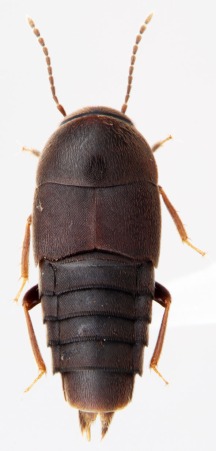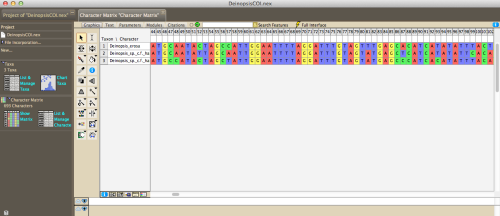Sometimes it can be tricky deciphering the difference between intra- and inter-specific variation – differences between individuals of a given species as opposed to those that exist between representatives of different species – without consulting molecular divergence. When molecular data is lacking, taxonomists typically compare a large sampling of individuals across the available morphological variability in order to identifying species boundaries; taxonomists typically look for breaks in a seeming continuum of morphological variation.
In the case of the genus Deinopsis, there was a noticeable lack of available specimens for this sort of approach when the genus was revised in 1979. Understandable given the scarcity of Deinopsis, they seem to be a rare group.

Genitalic variation in Deinopsis harringtoni, illustrated by Klimaszewski’s transformative revision of the genus.
In Klimaszewski’s comprehensive revision of the genus, genitalic vatiation (a feature commonly used to distinguish species) in Deinopsis harringtoni, a rather widespread northeastern North American species, was determined to represent intra-specific variation.
Deinopsis species occur in swampy and more muddy banks of slow to stagnant bodies of water compared to Gymnusa, a related genus that I previously introduced how to collect. Incidentally, I had the opportunity to collect Deinopsis on several occasion last summer.
Among the Deinopsis specimens I collected were two series which I had tentatively identified as D. harringtoni, but males from the two samples sported different genitalic morpho-types. Considering the possibility that this genitalic variation in fact represented species boundaries, I sequenced both D. harringtoni samples to compare their pairwise molecular divergence.
Low and behold, comparing partial COI sequences of the tentative D. harringtoni specimens in reference to a Palearctic species, D. erosa demonstrated over 20% sequence divergence between every pairwise comparison of the three Deinopsis specimens. The morphological differences between D. erosa and harringtoni qualitatively appear significant, suggesting that the degree of molecular divergence I found in the partical COI sequences sufficiently identifies species boundaries.
What was previously considered intra-specific variation in D. harringtoni genitalic morphology may in fact indicate boundaries between species that: geographically occupy close to overlapping ranges with little to no external morphological identifiers – Deinopsis harringtoni could be a complex of cryptic species. Pretty exciting stuff and definitely warrants more collections to be made across the country to sample more populations. This will be fun and challenging since these guys can be pretty rare.




